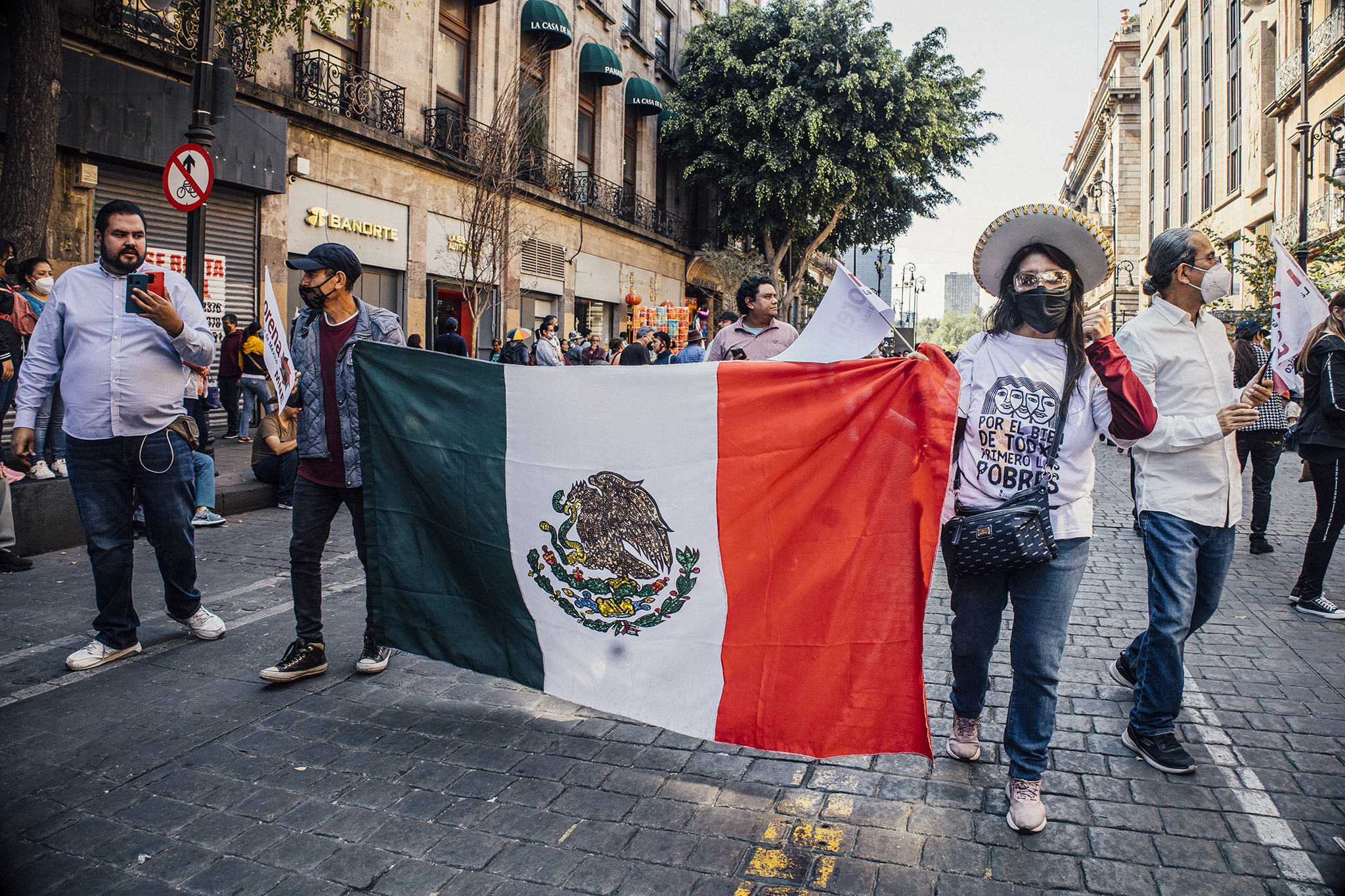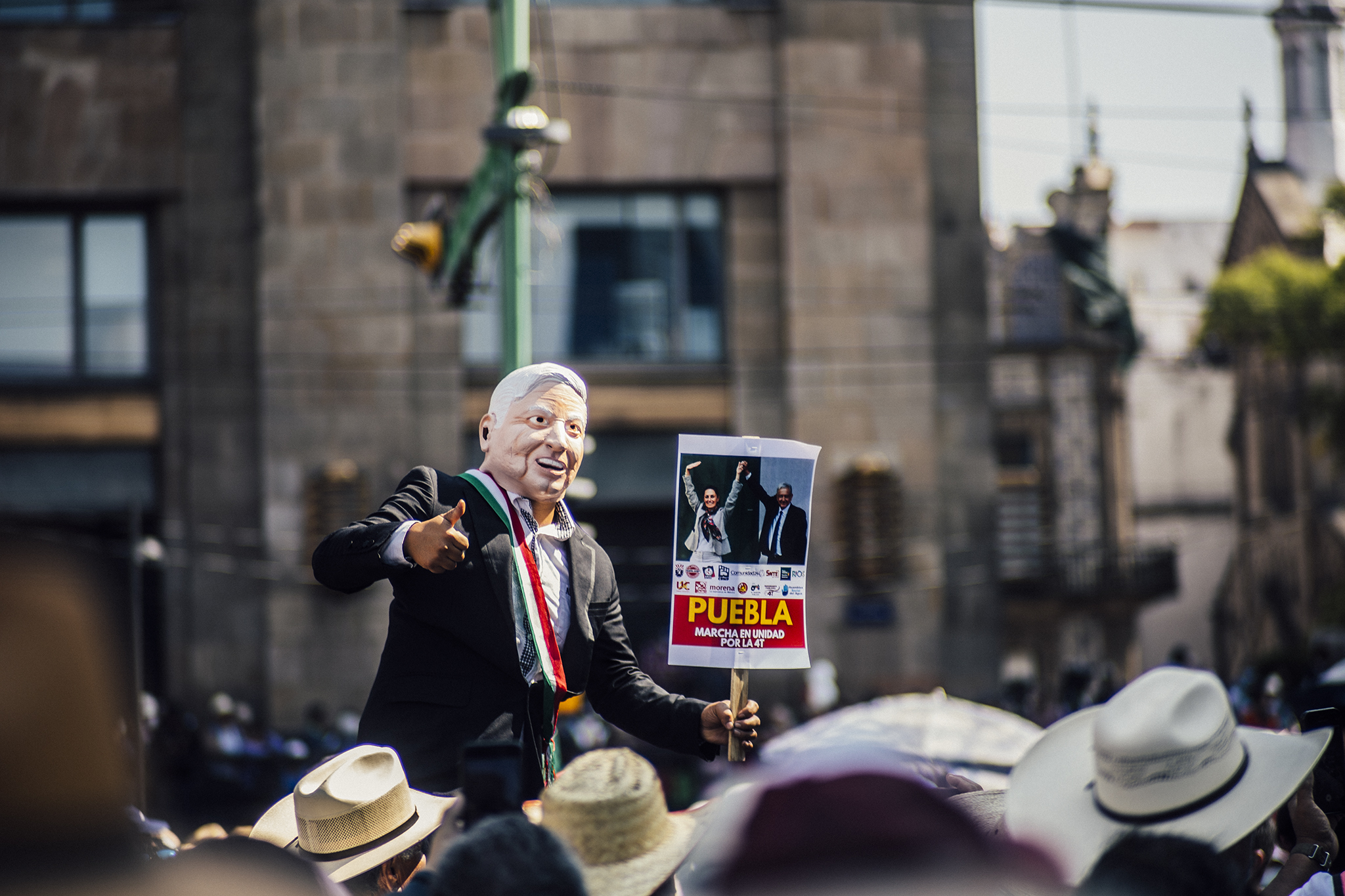Learning from Mexico’s “4th Transformation”
This article first appeared at Liberation Road. Authors Meizhu Lui and Bruce Hobson are co-founders of the Mexico Solidarity Project
The June 2 presidential election of Claudia Sheinbaum made international headlines and gave an enthusiastic boost to Latin America’s Pink Tide. The former Mexico City mayor and lifelong leftist makes history as Mexico’s first woman president as well as its first leader of Jewish background. But Sheinbaum also carries on the important legacy of a decade-long political project from which the US Left has much to learn.

Unfortunately, even progressives have too often been taken in by the propaganda of the US corporate press that does not want to see leftist governments south of our border succeed. It’s time for us to take note and take a lesson. We can use Mexico’s success to argue for and organize our own transformation!
In 2018, after 70 years of one-party rule by the rightist PRI party and 12 years of even more conservative presidents from the PAN party, the Mexican people had had enough. In that year’s presidential contest, they elected Andrés Manuel López Obrador (AMLO), national leader of the Morena party, which had been founded just four years earlier. Now, in AMLO’S final year as president, his support runs between 60 and 70%—greater than almost any democratically elected national leader on the planet.
While not a socialist, AMLO bases his social outlook in part on the theology of liberation. His slogan “for the good of all, but first the poor” is reflected in his administration’s enormously successful policies, which offer a vision of how radical reforms could put us on the path to socialism. For instance, he has debunked the capitalist myth that lifting people out of poverty will ruin the economy. Despite dire predictions from the opposition, AMLO’s doubling of the federal minimum wage has led to economic growth, proving that giving people financial support actually stimulates the economy.
And that’s only the tip of the iceberg. Just consider that since 2018, AMLO’s administration has:
- Increased pensions for seniors and the disabled and provided funds to students to cover the cost of school books and supplies.
- Guaranteed a maximum price for gas—roughly $3 USD per gallon equivalent. (One reason for people’s enormous anger against the last neoliberal president, Enrique Peña-Nieto, was the rapid rise of gas prices at the pump.)
- Nationalized lithium production, bringing a strategic resource under public control and helping ensure an affordable public energy sector.
- Created a public banking system, Banco del Bienestar, that gives poor people the opportunity to have bank accounts and obtain loans without paying exorbitant interest and fees. As a social bank, it promotes and facilitates savings among Mexicans, both inside and outside the country, giving special consideration to women and indigenous communities.
In addition, AMLO has won the hearts of the people by insisting on Mexico’s sovereignty in the face of the colossus to its north. While he has made some tactical retreats and compromises, he has refused to back down on Mexico’s right to set its own path. For example, he has outlawed GMO corn—causing the US to file a suit saying that the ban violates the free trade agreement. But Mexico insists that the health of its people takes precedence over the “rights” of foreign corporations to profit at their expense.
“Socializing” the economy and resisting the neoliberal agenda of privatizing everything has been a major focus of Morena’s struggle against Mexico’s entrenched oligarchy. AMLO has proven that the public sector can perform better than private business. In the US, people on both the right and the left are often antigovernment and believe that no politician can be trusted. The Morena government demonstrated that the problem was not government per se—it was the corrupt neoliberal governments of the PRI and PAN.
AMLO sold off the presidential jet, drives an ordinary car, opened the presidential palace to the public instead of living there, and eats at cheap restaurants with the common people. Over his six-year term, the working-class vote has moved more and more into Morena’s progressive column. For the first time, here’s a president who identifies with the working class and they with him.
Perhaps most important of all, AMLO has raised the political consciousness of the Mexican people. Every morning for the past 6 years, he has held a press conference, the mañanera, which lasts as long as people have questions. He speaks like a man on the street, peppering his talk with humor and folk expressions. The mañaneras are broadcast on TV and have become more popular than Mexico’s soap operas! AMLO has visited virtually every city and village throughout the country to listen to people and explain his ideas. Now, people are interested in politics: a record number watched the three recent presidential debates, and 70% of the electorate turned out to vote on June 2.
Mexico’s corrupt National Electoral Institute (INE) badly mishandled the June 2 election. Problems were rife: insufficient ballots; polls opening late and closing early; INE officials openly voicing their candidate preference at the polls; in some places, voters were prevented from entering polling stations because of poor logistics. Despite these issues, people flooded to the polls and stood in line in blistering heat to cast their vote for Claudia Sheinbaum. Her rout of the conservatives (60% to 28%) and the capture of nearly every governorship, two thirds of the Congressional representatives and nearly two thirds of senators, offers a historic opportunity for the Mexican people to continue to deepen the process of social, political and economic transformation initiated under AMLO.

Foundational to Morena’s vision is what AMLO has called Mexico’s “Fourth Transformation.” The first three transformations were Mexico’s war of independence against Spain, the Reform War against the dictatorship and control of the Catholic Church, and the 1910 Mexican Revolution against the dictatorship of Porfirio Díaz, who was president for 35 years from 1876 to 1911. Today’s Fourth Transformation is taking place without violence, and it’s been going on under our noses.
Mexico’s June 2 election offers precious lessons for the US Left as we consider what it would take to fundamentally transform our own society, economy, and government. It gives proof that awakening the working class, strengthening the public sector, and uplifting the marginalized is not pie in the sky. We can learn from Mexico’s example as we grapple with how to win governing power, decisively defeat the Right and complete the unfinished work of our own past transformative moments —the First Reconstruction of 1865-1898 and the Second Reconstruction of the Civil Rights Era. We can achieve a Third Reconstruction. Si, se puede. Yes, we can.

